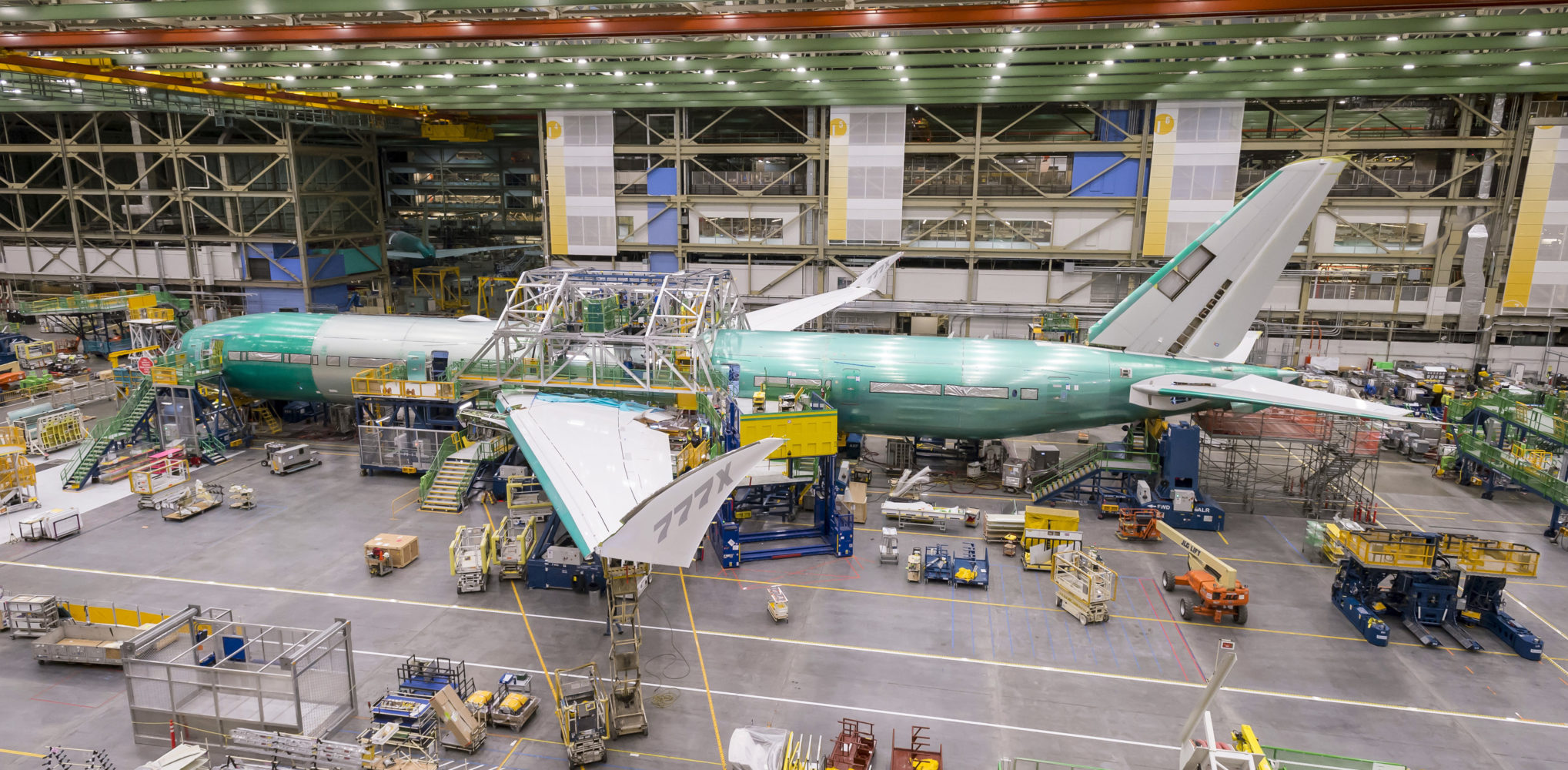Boeing 777x flight test aircraft comes together
Fuselage sections for the first flight test Boeing 777x have been joined, taking the aircraft one step closer to reaching for the skies.
The nose, center and rear sections of the 777-9 were slowly edged together before being fastened by the engineers working on the aircraft. All of this took place at Everett, Washington, where another 777-9 was constructed earlier for static ground testing.
All together, with everything joined, the aircraft is 77 meters long from nose to tail.
Video of the aircraft coming together:
Vice President and General Manager of the Boeing 777x program, Josh Binder, reflected on the joining process in the following statement:
“The 777x is a new airplane and a new production system. With the 777x, the production system was integrated into the development program sooner than any other airplane, and the team is doing a great job of hitting our milestones as expected.”
First flight of the 777-9 will take place next year, before being handed over to Emirates, who is the launch customer for the model.
In order to continue operating at airports with existing 777 facilities, Boeing developed folding wing tips for the type, that allows the aircraft wing to reach 72 meters when extended. Before takeoff and after landing, the wing tips can be extended or retracted. Boeing has outlined the safety details for the system in the unlikely case something should go wrong. The locking and warning system is intended to prevent any failure of of the system or incorrect operation.
A specially shaped switch on the overhead panel that resembles the folding wing tip will have to be manually changed to the extend or retract position by the pilots. In addition to this feature, Boeing has adopted the 787 Dreamliner flight deck as well as common features from the existing 777 flight deck that allows for a common type rating and an intuitive flying experience. Touch screen displays will be installed, which allow pilots to move information around seamlessly and input data using familiar methods.
Two GE9X engines will power all Boeing 777x family aircraft. General Electric flew the engine for the first time on the 13th of March, 2018, on their new Boeing 747-400 test bed. Despite some delays in the engine schedule due to a redesign of the variable stator valves and lever arm, General Electric is still on track to get all engines to Boeing on time for their three test aircraft.
Video of the GE9X first flight:
The new wing and engines on the 777-9 allow airlines to carry approximately 400-425 passengers and fly them 7,600 nautical miles (14,000km). The second family member, the 777-8, is set to be constructed for the first time two years after the 777-9. With an advertised range of 8,690 nautical miles (16,090 km), carrying roughly 365 passengers, the 777-8 is slated to become successor to the Boeing 777-200LR and potentially the base for a new freighter model.
A possible stretch of the 777-9, dubbed the 777-10, is being investigated by Boeing and would seat 450 passengers to take on the A380. Emirates has shown interest in the aircraft, as well as Singapore Airlines, who is also talking to Airbus about a potential A350-1000 stretch, however not much details have been released from either manufacturers about how in depth the investigations are.
Boeing has orders and commitments for 340 777x family aircraft from the world’s major airlines, including Emirates, Cathay Pacific, Qatar Airways, Lufthansa, Singapore Airlines, Etihad and All Nippon Airways. Breaking it up into the two members, the 777-8 is sitting at a relatively small figure of 53 aircraft, compared to the 273 that the 777-9 has under its belt.




